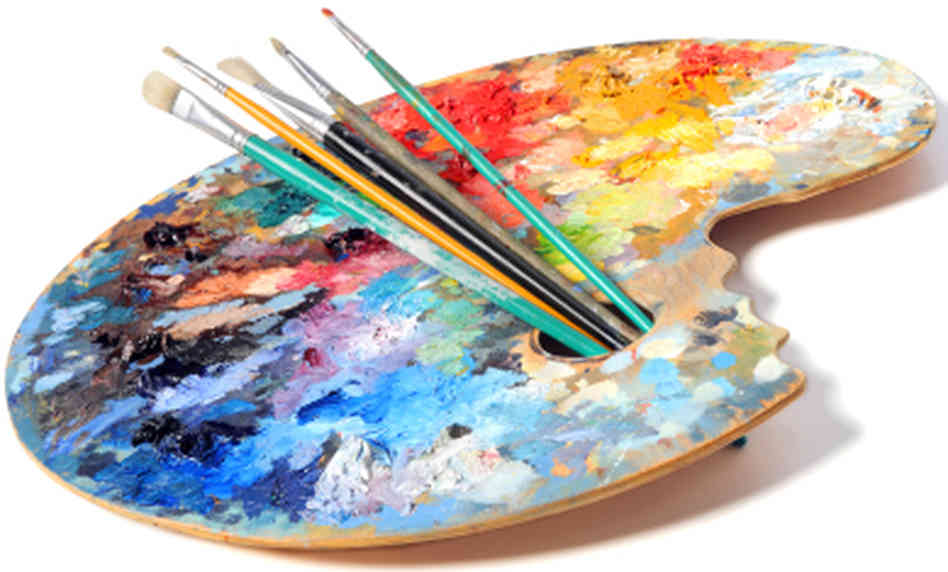Exploring the Effect of Trump Art on Contemporary Political Commentary
Exploring the Diverse Globe of Artistic Expression: From Surrealism to Abstract Realistic Look
In the world of creative expression, from the dreamlike landscapes of surrealism to the elaborate play of light and kind in abstract realism, artists have actually continually pushed the borders of imagination and creative imagination. As we explore the multifaceted world of art, we are offered with a tapestry of styles, techniques, and approaches that test our understanding and provoke reflection.
Surrealism: Letting Loose the Subconscious
Surrealism, a progressive imaginative activity of the 20th century, dug right into the depths of the subconscious, introducing a world of dream-like imagery and unconventional associations. Led by musicians like Salvador Dali, René Magritte, and Joan Miró, Surrealism looked for to challenge the conventional means of seeing and comprehending art. Through techniques such as automatism and desire analysis, Surrealist artists intended to take advantage of the unconscious mind to reveal covert truths and needs.
One of the essential aspects of Surrealism was the focus on the irrational and the uncanny. By combining unforeseen aspects in their works, Surrealist musicians aimed to produce a sense of disorientation and surprise in the customer. This disturbance of reasoning and factor was indicated to provoke a much deeper expedition of the subconscious and the mysteries of the human psyche.
Abstract Realism: Redefining Perception
Challenging conventional imaginative boundaries, Abstract Realism redefines understanding via the blend of well-known components with abstract forms. This innovative approach to art integrates the representational precision of realism with the innovative freedom of abstraction, using audiences a distinct aesthetic experience that prompts them to question their understanding of truth.
In Abstract Realistic look, musicians aim to capture the significance of their subjects while additionally instilling their collaborate with a sense of depth and complexity through abstract aspects. By blending the knowledgeable about the unfamiliar, these musicians invite target markets to engage with their items on several degrees, urging them to discover the nuances of texture, type, and shade.

Cubism: Fragmenting Reality
Using geometric forms and fragmented perspectives, Cubism reinvented the creative representation of truth in the very early 20th century. Created by Pablo Picasso and Georges Braque, Cubism looked for to challenge traditional concepts of point of view and depiction. By damaging down items and figures into geometric forms and offering them from several viewpoints at the same time, Cubist musicians intended to record the significance of the subject instead than its actual appearance. This approach not just deconstructed fact but likewise stressed the monotony of the canvas, leading the way for future abstract art movements.

Cubism can be categorized into 2 main stages: Analytical Cubism, defined by monochromatic color design and intricate, fragmented kinds; and Synthetic Cubism, which included collage elements and brighter colors into the compositions. Through these distinct phases, Cubism affected not only painting however likewise layout, sculpture, and style. trump art. Its impact reverberated across the art world, inspiring musicians to check out new means of standing for the globe and translating around them
Expressionism: Emotions on Canvas
Checking out the depths of human feelings via meaningful and vibrant brushstrokes, Expressionism arised as a profound artistic movement in the very early 20th century. Unlike previous art activities that concentrated on portraying the outside globe, Expressionism explored the interior world of the musician's psyche, intending to stimulate raw emotions and prompt visceral actions from audiences.
Expressionist musicians, such as Edvard Munch, Egon Schiele, and Emil Nolde, turned down traditional concepts of appeal and realism for misshaping form and color to communicate subjective sensations. The use of overstated brushwork, bold colors, and distorted figures aided create a more information feeling of unease, alienation, or passion in their jobs.
One of one of the most popular instances of Expressionism is Munch's "The Scream," which catches the intense anxiousness and despair of modern life through its swirling, distorted number against a blood-red sky. Through their mentally billed works, Expressionist artists sought to test conventional imaginative norms and provide a window right into the stormy depths of the human heart.
Contemporary Art: Progressing Viewpoints

One of the specifying characteristics of modern art is its consistent advancement and capacity to adapt to changing cultural landscapes. Artists are increasingly incorporating innovation into their method, obscuring the lines between the physical and electronic worlds. This combination of mediums enables cutting-edge means of storytelling and involving with target markets in a much more interactive manner.
Moreover, modern art frequently works as a platform for social commentary, addressing pressing concerns such as identification, politics, and the atmosphere. Artists are utilizing their work to provoke and stimulate vital discussions idea, clarifying the intricacies of the globe we stay in. As perspectives remain to develop, contemporary art stays a dynamic and prominent force in forming our cultural landscape.
Conclusion
To conclude, the world of creative expression incorporates a vast array of motions and styles, each with its very own one-of-a-kind strategy to communicating significance and emotion. From surrealism's expedition of the subconscious to abstract realistic look's redefining of understanding, and from cubism's fragmentation of fact to expressionism's representation of feelings, art continues to advance and test perspectives - trump art. Contemporary art reflects the ever-changing globe we reside in, using new ways to translate and comprehend the complexities of our fact
As we discover the diverse world of art, we are presented with a tapestry of designs, strategies, and philosophies that challenge our understanding and provoke contemplation. Its influence resounded across the art world, inspiring musicians to check out brand-new methods of representing the world and translating around them.
